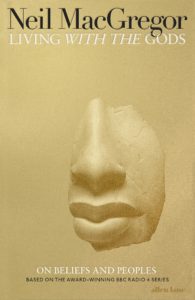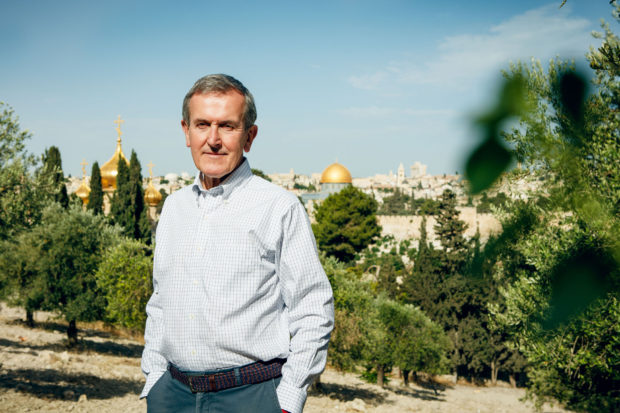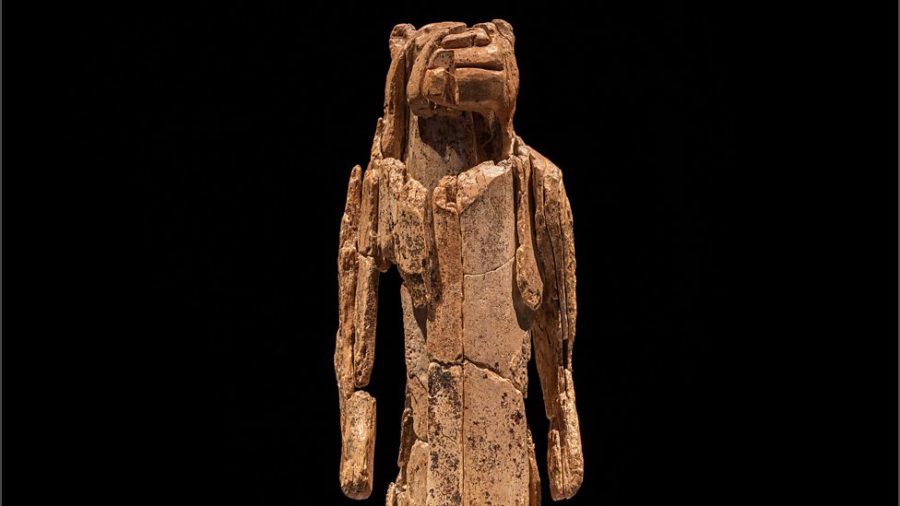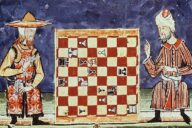This article offers a critical review of Neil MacGregor’s latest book Living with the Gods. Although the book was published at the end of 2018, it is not late to recommend this wonderful reading and reflection on the ever existing relation of human kind with God.
Neil MacGregor has chosen to open his new book with a statement of what it is not. Living with the Gods, he writes, is neither a history of religion, nor an argument in favour of faith, nor a defence of any one belief. Rather, it is an attempt to define the nature of belief, the way it influences people and the countries they inhabit, and to show how fundamental it is in explaining who we are and where we came from. For, as he says, it is in deciding how we live with the gods that we decide how to live with each other.
“We lived with the gods before we lived at close quarters with each other”
MacGregor has spent many years using art and artefacts as a means of looking at the past, and once again his new book has been accompanied by a radio series and an exhibition. Most of the objects he describes come from the riches of the British Museum, of which he was director for 13 years. Scrolls, pots, fragments of cloth, hair, icons, coins, statues, cuneiform texts and inscribed vessels act as triggers for short essays designed to show how societies have imagined and inhabited their place in the world. Though much of the modern world lives far from its dead, the British Museum is full of their spirits. This scholarly, elegantly written book is a reminder of how seldom, when visiting a museum, most of us take the time to inquire into what lies behind the objects we look at. Living with the Gods is a celebration of curiosity.
The relation of men with God
 The Enlightenment thinkers believed that if you could separate organised religion from the state, there would be no more wars. It was, MacGregor writes, to ignore a crucial element in the human psyche: the need to belong and to have a story, a narrative, not only as an individual but as a community, complete with legends and myths; and it was ever thus. At Göbekli Tepe in south-eastern Turkey, 6,000 years before Stonehenge was built, hunter-gatherers were already cooperating in the making of a shared site for religious ceremonies. It suggests, MacGregor notes, that “we lived with the gods before we lived at close quarters with each other”. Analysing, one by one, objects from every corner of the world and every moment in history, he describes the way that humans have used places, as well as objects that can be touched and felt, to make connections with the divine. It is this interweaving of history and the links between time and place that make his book so enjoyable and so impressive.
The Enlightenment thinkers believed that if you could separate organised religion from the state, there would be no more wars. It was, MacGregor writes, to ignore a crucial element in the human psyche: the need to belong and to have a story, a narrative, not only as an individual but as a community, complete with legends and myths; and it was ever thus. At Göbekli Tepe in south-eastern Turkey, 6,000 years before Stonehenge was built, hunter-gatherers were already cooperating in the making of a shared site for religious ceremonies. It suggests, MacGregor notes, that “we lived with the gods before we lived at close quarters with each other”. Analysing, one by one, objects from every corner of the world and every moment in history, he describes the way that humans have used places, as well as objects that can be touched and felt, to make connections with the divine. It is this interweaving of history and the links between time and place that make his book so enjoyable and so impressive.
Every so often, after the public has left, the cleaners in the British Museum come across little offerings laid at the foot of statues, most often Hindu ones. The cases of exhibits themselves are full of these propitiating gifts, whether in clay, silver, gold, wax or metal. A 19th-century Japanese picture of a shrine, found in an agricultural community, has a pedestal, decorated with three foxes; visitors to the shrine regularly brought tofu with which to feed them. In the north of what is now Colombia, the Muisca, who lived between 600 and the 1530s, were skilled gold makers, to judge by a rare piece that has survived. Having made their delicate, exquisite objects, they threw them into a lake as offerings to the gods, to ensure a peaceful equilibrium between heaven and earth. It took the arrival of Europeans, who dredged the lake and plundered everything they found, to put an end to such gracious selflessness.
While most of MacGregor’s book concentrates on the peaceable aspects of faith, from pilgrimages to shrines, household gods to shared deities, he does not avoid the acts of violence committed in the name of religion
While most of MacGregor’s book concentrates on the peaceable aspects of faith, from pilgrimages to shrines, household gods to shared deities, he does not avoid the acts of violence committed in the name of religion, especially where religion and state act as one; or where, as in revolutionary France and Russia, rulers set out to replace religion with reason and wound up with murder. The current religious turmoil of the Middle East finds its place in Living with the Gods, but a jubba, a beggar’s tunic, worn by the followers of the messianic Islamic Mahdi in Sudan and now in the British Museum, gives MacGregor the opportunity to describe the slaughter of 12,000 of the Mahdi’s followers by the British under Kitchener at Omdurman in 1898. Behind many of MacGregor’s objects lie stories of considerable violence.
A message of harmony and coexistence
Living with the Gods, with its sections on everything from French laïcité to the Yup’ik people of Alaska, who believe that the soul resides in the bladder of seals, ends with an unexpected message. Far from shrinking away, organised religion appears to be spreading. In Japan, one of the most secular countries in the world, young pregnant women are once again choosing to wear specially propitious sashes and taking offerings to the temples, in the name of children they have lost or aborted. In India, the numbers of Hindu pilgrims attending the Kumbh Mela festival to celebrate the virtues of detachment and compassion have now reached 100 million, making it the largest religious event in the world. Faith is providing cohesion and reassurance.
However, as MacGregor admits, everywhere from Pakistan to Israel, Myanmar to Nigeria, religion is increasingly shaping national identity and politics, and driving territorial disputes. It is also hard not to feel, at the end of this fascinating book, that with our battery farms, exploitation of resources, pollution and the hunting of animals and birds to extinction, the interrelationship between humans and the living world is seriously out of kilter. We have a very long way to go before we live properly either with the gods or with each other.
Source: The Guardian
















No Comments